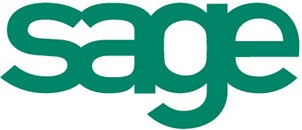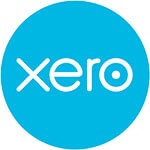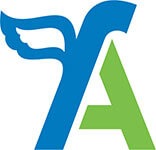Update on Furlough Leave with worked example.
Written 26/03/2020 as an adaptation from ICAEW interpretation of HMRC guidance.
- Furloughed members of staff must not work for the employer during the period of furlough.
- Furlough is from 1 March 2020, so is to be backdated. It will last for at least 3 months and will be extended if necessary. Note that while the scheme is backdated to the beginning of March as it is intended to support all those employed then, a firm will only be eligible to claim the grant once they have agreed the furlough with their staff and staff have stopped working for the employer. This will of course be subject to employment law in the usual way.
- The scheme is available for employees on the payroll at 28 February 2020.
- All UK businesses are eligible, ‘any employer on the country, small or large, charitable or non-profit’ to use the Chancellor’s words.
- The scheme pays a grant (not a loan) to the employer.
- The grant will be paid to the employer through a new online system which is being built for this purpose. There is no detail about the application process at the moment.
- The employer will pay the employee through payroll, and report payments to HMRC using the Real Time Information (RTI) system as usual, as required by the employment contract. This contract may be re-negotiated, but that is a matter for employment law.
- The scheme will be administered by HMRC:
Relevant employees must be designated as furloughed employees.
• Employers will submit claims to HMRC through a new online portal.
• As the system will take time to build, businesses should look to the Coronavirus Business Interruption Loan Scheme to support cash flow in the meantime if required. - The maximum grant will be calculated per employee and is the lower of:
80% of ‘an employee’s regular wage’ and.
• £2,500 per month.
Plus the associated employers’ NIC national insurance contributions (NIC) on this amount and the minimum automatic enrolment employer pension contributions on that wage.
Fees, commission and bonuses should not be included.
This gives a maximum cap of £2,500 +£245 (employers’ NIC) + £59 (auto- enrolled pension contribution) = £2,804 of total possible grant that can be applied for per employee per month.
Please see below worked examples on these CJRS.
Illustration 1
X Ltd employs Mr A at an annual salary of £24,000, so £2,000 per month. Mr A has opted out of auto enrolment.
Each month, Mr A currently receives net pay of £1,655 which is after deducting PAYE of £154 and employees NIC of £154. On this salary, the employer pays employers’ NIC of £177.
The available grant for the employer is the lower of;
(a) 80% of £2,000, and
(b) £2,500
Plus employers’ NIC on this amount
So X Ltd claims a grant of £1,600 plus £177 = £1,777.
The net amount of cash required by X Ltd to furlough Mr A based on maintaining the existing salary is £2,000 + £174 – £1,773 = £400 per month.
It is a matter for employment law whether the employer is actually required to pay this top up. Employees and employers can agree to a different arrangement during the furlough.
Illustration 2
X Ltd employs Mr B at an annual salary of £42,000, so £3,500 per month. Mr B has opted out of auto enrolment.
Each month, Mr B currently receives net pay of £2,675 which is after deducting PAYE of £492 and employees NIC of £333. On this salary, the employer pays employers’ NIC of £383.
The available grant for the employer is the lower of;
(c) 80% of £3,500 = £2,800, and
(d) £2,500
Plus employers NIC, £245, on this amount
So X Ltd claims a grant of £2,500 plus £245 = £2,745.
The net amount of cash required by X Ltd to furlough Mr A based on maintaining the existing salary is £3,500 + £383 – £2,745 = £1,138 per month.
It is again a matter for employment law whether the employer is actually required to pay this top up. Employees and employers can agreed to a different arrangement during their furlough.
Notes to illustration based on an extended understanding of how the scheme will work
- If Mr A had not opted out of auto enrolment, X Ltd would also be making pension contributions on his behalf.
- We understand that the rules for the scheme are being designed with underlying reference to employment law. If the individual is still under contract, Mr A can expect to receive his salary in full. The grant paid to X Ltd should not be taken as the new maximum cost of employment to the employer unless the contract has been redrafted.
- Subject to the employment contract and any amendment, the salary which the employer actually pays the employee during the furlough period may be different to the pay in the reference period and upon which the grant figure is based. however, the employer must pay at least the amount of the grant.
Pubco – a scenario
In the following illustration, the business has already closed as instructed by the government and is seeking clarification of our understanding of how the rules apply.
Mr & Mrs Fuller are the tenants of a pub. They have a substantial wet and food trade as the pub is in a coastal location and does good trade over the Summer. The pub is open all year round.
Mr & Mrs Fuller operate the pub through a limited company (Pubco). They take salaries of £8,600 each and withdraw profits of £30,000 each in the form of dividends. They live above the pub and work long hours being in the pub every day.
Pubco employs three permanent staff supplemented by extra seasonal staff in the Summer months and at Christmas.
The pub closed on 20 March as instructed by the Prime Minister. and following the Chancellor’s announcement on 20 March, Pubco has furloughed its staff other than Mr & Mrs Fuller who are still living above the pub and dealing with the company administration. The contracts of employment of the other staff have been varied to permit furloughing and the three permanent staff members have agreed to accept a pay reduction to 80% of the previous level. The seasonal staff for this year have not yet been hired.
Our understanding is that Pubco will be eligible to receive the government grant support under the Coronavirus Job Retention Scheme for the monthly wages of the three permanent staff members. The seasonal staff were not on the payroll at 28 February and so are not eligible. No grant support is available to support the living costs of Mr & Mrs Fuller.
Mr & Mrs Fuller will need to look for alternative support while the pub remains closed.
Coronavirus Job Retention Scheme: FAQ
Which businesses are eligible?
Eligible businesses include charities and not-for-profit organisations and will include single director companies, although the same rules will apply as to other businesses. The grant applies to all UK based businesses.
Owner/managed companies
Many owner managed company director/shareholders pay small salaries and the balance of income as dividends. The scheme does not extend to dividends. Only the salary is relevant to the scheme. Such companies must have been paying a salary through a payroll to be eligible for a grant.
In practice it may be difficult to be eligible for this as
How is payment going to work in practice?
We understand that the employer will pay the contractually agreed amounts as required by the employment contract in the usual way. This will involve paying the employee the net salary, and HMRC the PAYE and both primary and secondary national insurance Contributions. The grant will be paid directly to the employer. We do not know how this will operate for employers which use a payroll agency.
Employers will claim the grant through a new separate portal to be built byHMRC.
What is the £2,500 maximum grant based on?
As the £2,500 limit to the monthly grant appears to cover all employment costs, it is unclear how benefits in kind, and in particular those being payrolled, will be reflected in the calculation.
For full-time and part-time employees, the base for the 80% calculation is the employee’s actual salary as of 28 February 2020.
For employees whose pay varies, HMRC guidance advises the following:
“If the employee has been employed (or engaged by an employment business) for a full twelve months prior to the claim, you can claim for the higher of either:
– the same month’s earning from the previous year; or
– average monthly earnings for the year.
“If the employee has been employed for less than a year, claim for an average of their monthly earnings since they started work.
“If the employee only started in February 2020, use a pro-rata for their earnings so far to claim.
“Once you’ve worked out how much of an employee’s salary you can claim for, you must then work out the amount of Employer National Insurance Contributions and minimum automatic enrolment employer pension contributions you are entitled to claim.”
Will entitlement to other employment benefits continue during the period of furlough?
The rules for the grant will not displace the existing employment contract. So for example, we would expect the entitlement to holiday and sick pay would depend on the contract.
Employees eligible
Eligible employees are those on the payroll on 28 February 2020. Any employee who was made redundant after that date but who was employed then, can be re-employed and furloughed.
We have had many questions asking if workers can be moved in and out of being furloughed if work becomes available to an employer and then ceases again? The scheme is being designed to allow for flexibility so that furloughed staff can be brought back to work, for example, to replace those still working who later become sick.
An employee must remain on furlough for a minimum period of three weeks, although a further period may immediately follow the previous furlough if agreed. This will ensure flexibility and permit furloughed employees being brought back to cover, for example, sickness of others.
-This will again depend on the employment contracts of those affected.
-The matter of which employees an employer decides to furlough will be a matter for negotiation with staff and employment law.
-The impact on job sharing employees and the decision to furlough will be a matter for negotiation with staff and employment law.
-We presume that, subject to anything different stated in the employment contract, eligible employees will include apprentices.
-Agency workers are eligible.
-An employee does not have to accept furlough if offered, but the employer could then make the employee redundant instead using the usual employment law procedure.
-It is a condition of the scheme that the employee must do no work at all during the furlough period though they can undertake training. The intention of the scheme is to allow employers to pay staff who are without work. HMRC will of course have visibility of pay records. The condition is that the worker must not be making money for the employer.
Employees with more than one employment
While we understand that an employee who is furloughed can do no work at all, the employee can hold a separate employment with a different and unconnected employer which will be unaffected.
Finally, the government are changing policies on holiday entitlement and annual leave for employees. These changes will allow employees to carry forward holidays into the next two years.
Please see below a link to more information.
https://www.gov.uk/government/news/rules-on-carrying-over-annual-leave-to-be-relaxed-to-support-key-industries-during-covid-19?utm_source=c6e6eb22-18fd-4e76-9ec9-0eb32c478b5f&utm_medium=email&utm_campaign=govuk-notifications&utm_content=immediate









